A road trip around the landscapes of southern Namibia
Cathy Adams drives through deserts, national parks and the world’s second largest canyon on a road trip through the landscapes of southern Namibia

Your support helps us to tell the story
From reproductive rights to climate change to Big Tech, The Independent is on the ground when the story is developing. Whether it's investigating the financials of Elon Musk's pro-Trump PAC or producing our latest documentary, 'The A Word', which shines a light on the American women fighting for reproductive rights, we know how important it is to parse out the facts from the messaging.
At such a critical moment in US history, we need reporters on the ground. Your donation allows us to keep sending journalists to speak to both sides of the story.
The Independent is trusted by Americans across the entire political spectrum. And unlike many other quality news outlets, we choose not to lock Americans out of our reporting and analysis with paywalls. We believe quality journalism should be available to everyone, paid for by those who can afford it.
Your support makes all the difference.I’m standing on the edge of eternity.
It sounds dramatic, but I mean it literally. I’m on the edge of Fish River Canyon, in southern Namibia, near the border with South Africa. This canyon, the second largest in the world after the Grand, is around 650 million years old.
Okay, so it might not be an eternity, but that’s pretty old. When a shallow basin formed in the rock, which eventually carved out the canyon – now some 550 metres deep at points – the continents of America and Africa were still joined. Fast-forward a few million years and I’m now peering into it, hoping the strong gusts of wind don’t blow me in.
The rubbery quiver trees, fat with weaver bird nests, came later: these spindly, umbrella-like trees erupt from the gunmetal-grey slate stones that line the canyon’s edge, while the concrete balcony belonging to the chic lodge I’m staying at tonight is a mere few steps back. Helpfully, the slogan for Fish River Lodge, the only lodge in Namibia to sit on the lip of the canyon itself, is “the edge of eternity” (see?). Sink too many Namibian red wines in front of the firepit in the lodge’s open bar and restaurant, forget your torch (thankfully provided) and perhaps stumble over a dassie lurking outside your room and you’d tumble straight into the chasm, never to be seen again.
Fish River Canyon is possibly, maybe, I think the most spectacular landscape I clap eyes on during a two-week road trip around southern Namibia. I’ve gone south because… well, not many other people do. Anecdotally, many visitors arrive in dusty capital Windhoek before pinballing north to safari-stuffed Etosha National Park, west to the wind-blown coast and then onto the burnt orange dunes of Sossusvlei. I wanted something a bit different: to drive the great southern loop of Namibia, to take the path less-trodden. I wanted to find as many different landscapes in just two weeks as possible – easy in a wonderfully varied country like Namibia. Which is what brought me to Fish River Canyon in the first place.
After a day or so in Windhoek – really all you need in this flat, 1950s-style African capital, home to the Lutheran Christuskirche and the fun Joe’s Beerhouse, a honeypot for hungry out-of-towners – we drive south west out of the city towards the barren Namib-Naukluft National Park.
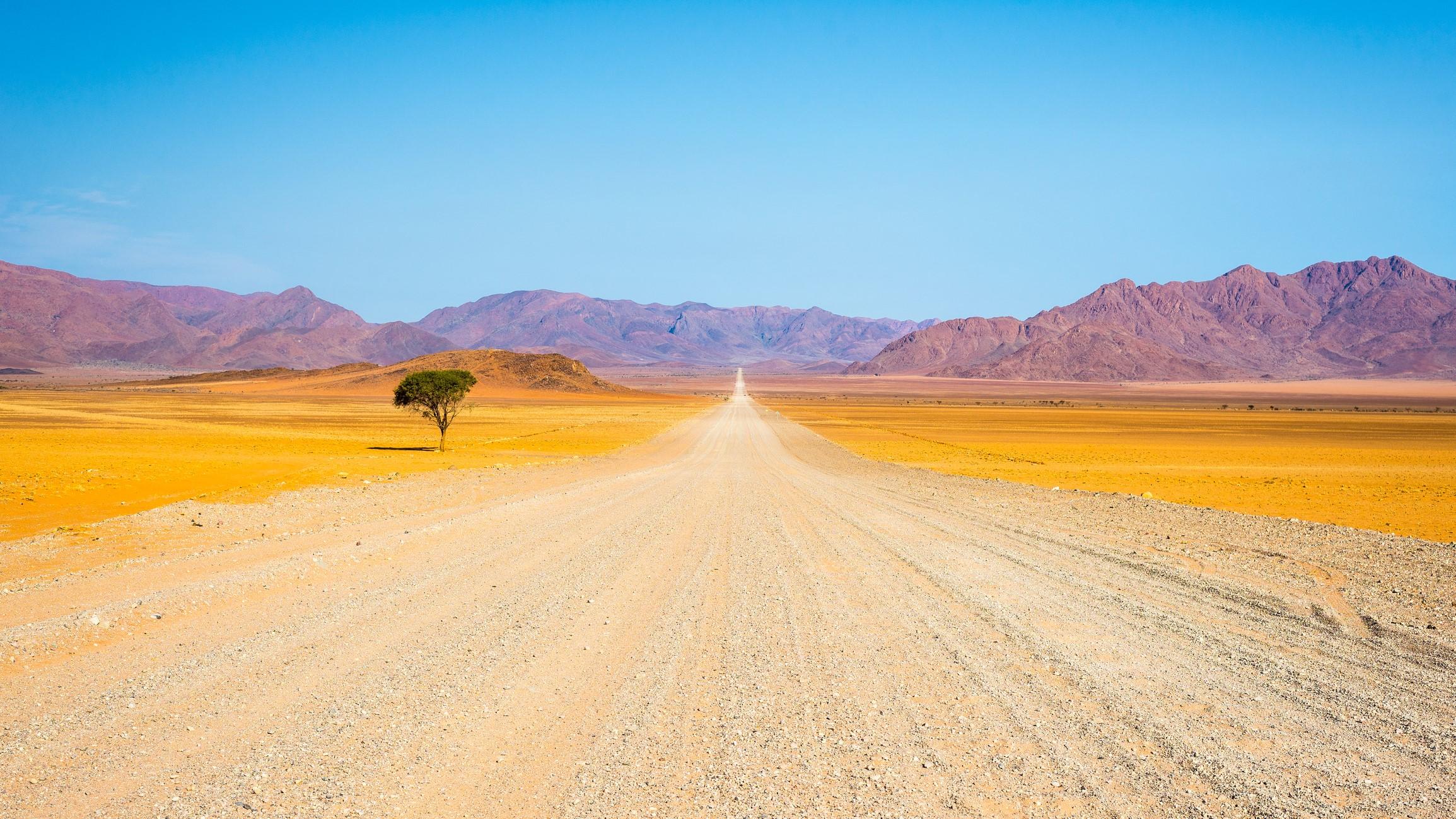
Travel in Namibia, unless you’re particularly outdoorsy, involves bouncing between perfectly situated lodges on long, long drives. Our destination, 184 miles and four hours’ drive mostly down a gravel road, is Desert Grace, a contemporary-cool lodge overlooking the charred brown rocks of the park.
And so here is the next landscape: the scrubby orange-brown flatlands of the Namib-Naukluft National Park, home to antelope of all sorts – springbok, oryx, eland – and, thrillingly, a shy dazzle of Hartmann’s mountain zebra that run across our path one dimly lit morning. Sitting on the private deck of our lodge at Desert Grace, glancing up at razor-sharp skies (oh look, there’s Orion’s Belt and the Southern Cross, a mere 88 million light years away from Earth), with a margarita in hand from the lodge’s neon-lit, urban-in-feel cocktail bar, feels otherworldly.
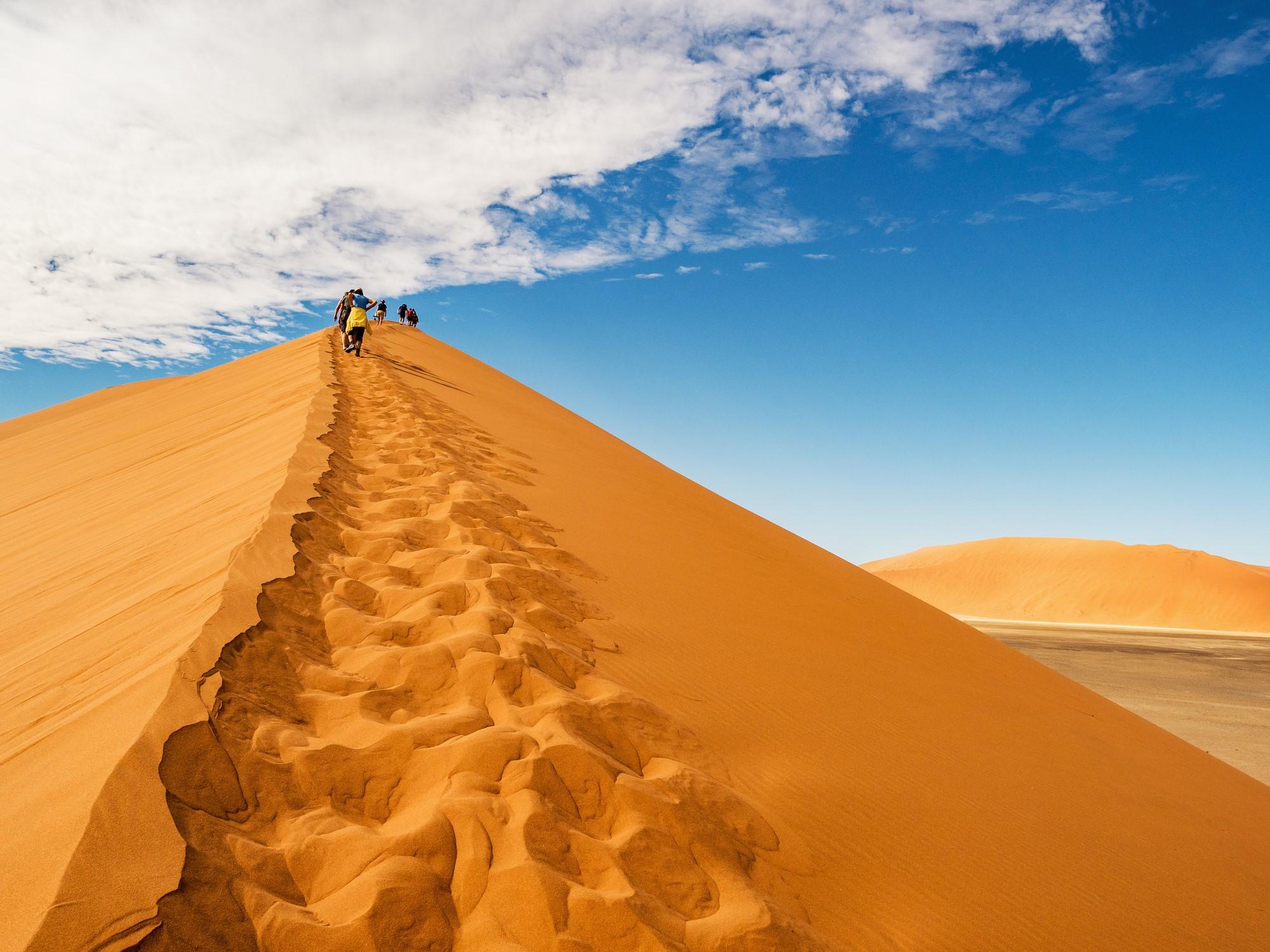
The Namib-Naukluft National Park, at more than 19,000 square miles big, encompasses the giant dunes of Sossusvlei in the Namib Desert, the world’s oldest. Further back in time we go. The sands of Sossusvlei, meaning “dead end marsh”, are just 50 million years old... a baby compared to Fish River Canyon.
This landscape, these burnt orange dunes inching out of the dry clay pans, are Namibia on celluloid. Despite seeing them in a hundred Instagram pictures, in person they’re even more impressive: smooth curves of sand rising high from the horizon, rendered in a boiled sweet shade of orange. Some are sweetly named things like “Big Daddy” and “Big Mama”, or there’s the more prosaic “Dune 45”, at mile 45 along the paved track from the main road at Sesriem. We drive until the road turns into sand, and from here it’s a further two kilometres to Deadvlei, the shiny white clay pan home to blackened stumps of acacia trees. They were once thriving in this valley, until the river changed course and left a cracked heel of ground, between 600 and 700 years ago. I imagine these arboreal skeletons are what my plants at home look like.
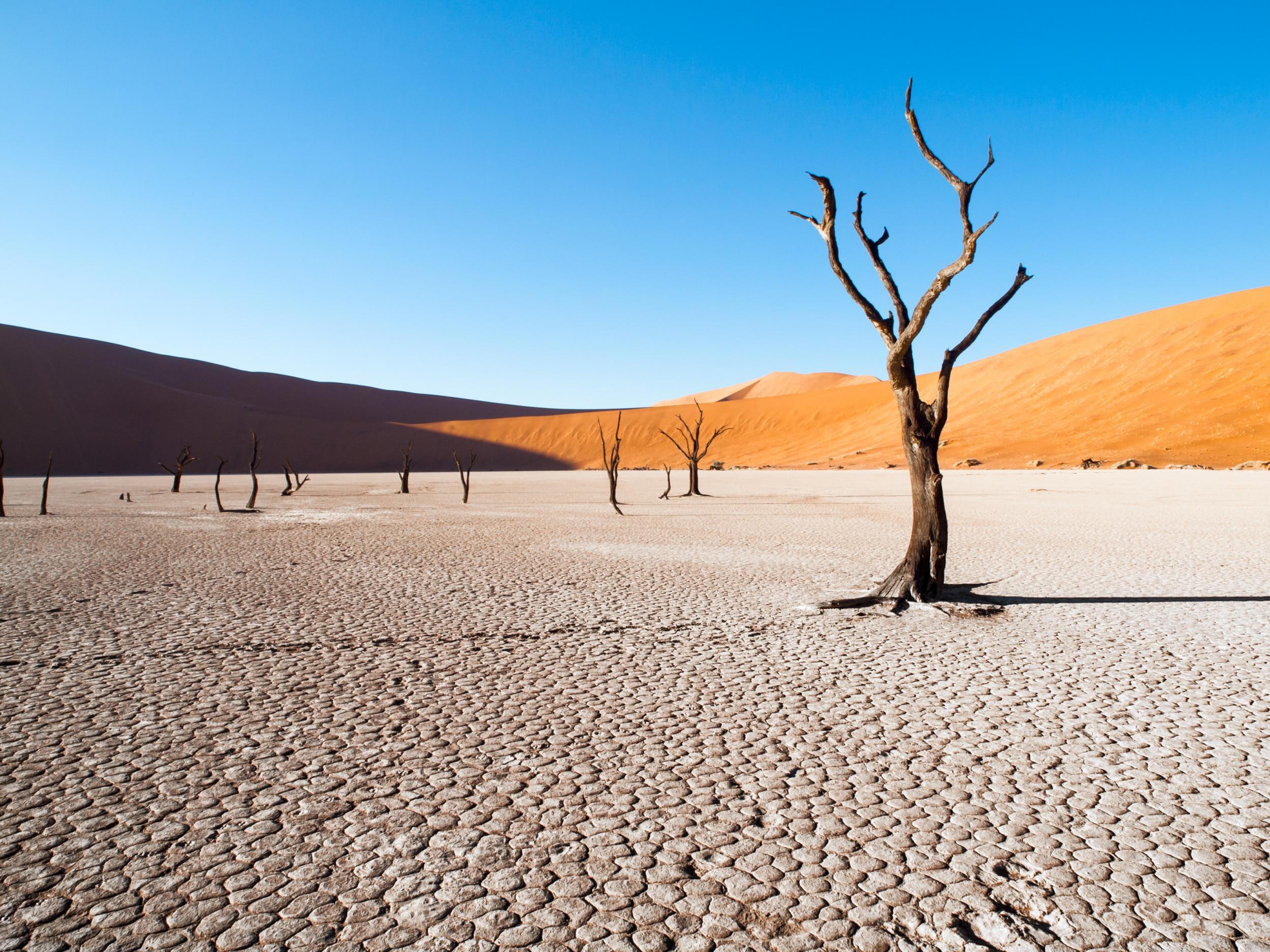
The Namib-Naukluft National Park is so vast – indeed, it’s the largest game park in Africa – that it stretches beyond the dry-as-dust Namib Desert both further south and towards the coast. Which is where we’re headed now. Our next destination is the Eagle’s Nest lodge in the Klein-Aus Vista Reserve, a mere 100 or so kilometres from Luderitz, a town developed around the region’s diamond mining heritage, now less about sparklers than seal colonies, African penguins and dolphins; and the eerie, cinematic beauty of Kolmanskop, a once-thriving miners’ town now buried almost entirely by sand.
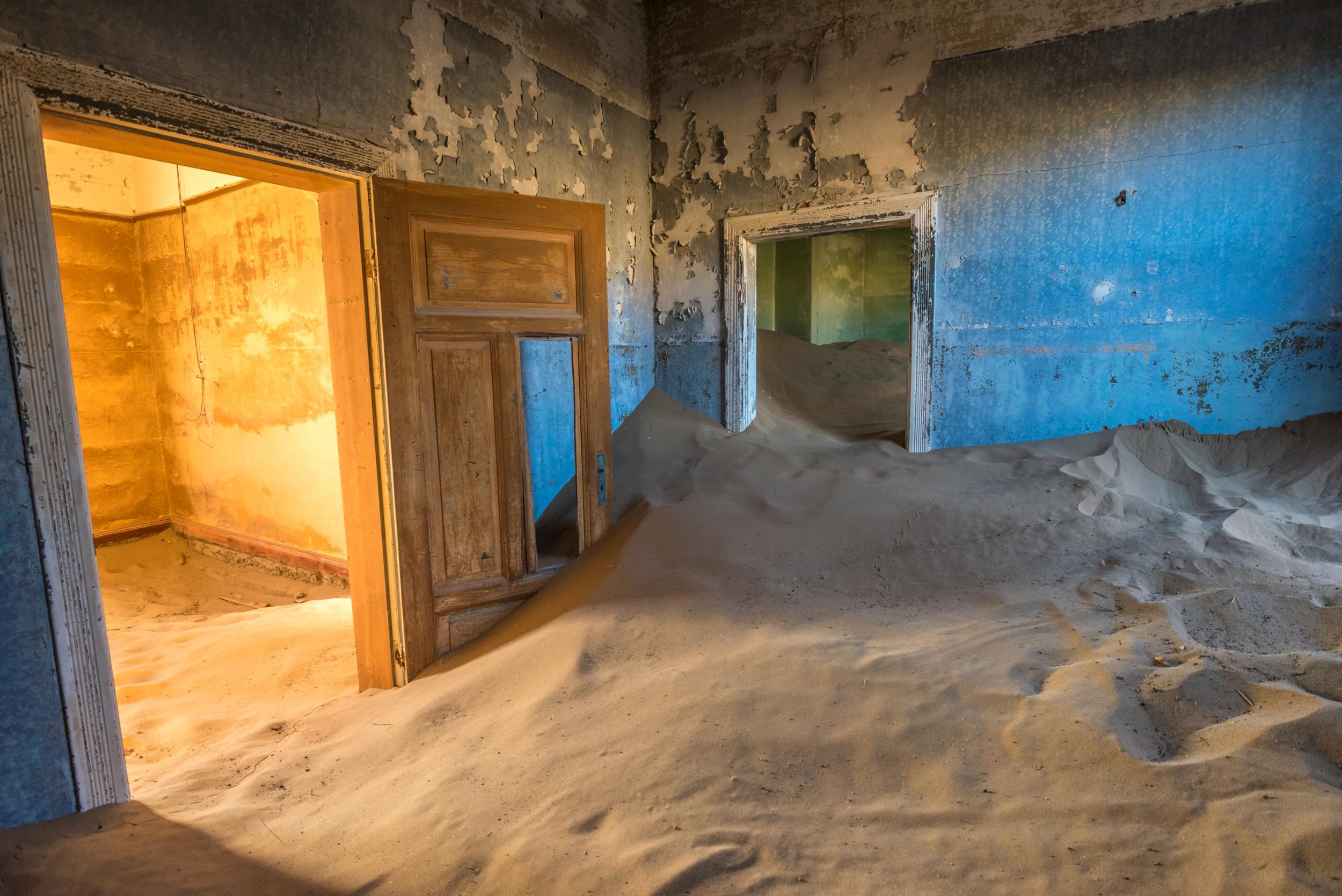
To close the southern loop, after meandering south to Fish River Canyon, we skim through Keetsmanshoop – a nondescript town that serves us well as a stopover point for noodles and bottles of Windhoek beer, but nothing else – towards the Kalahari Desert.
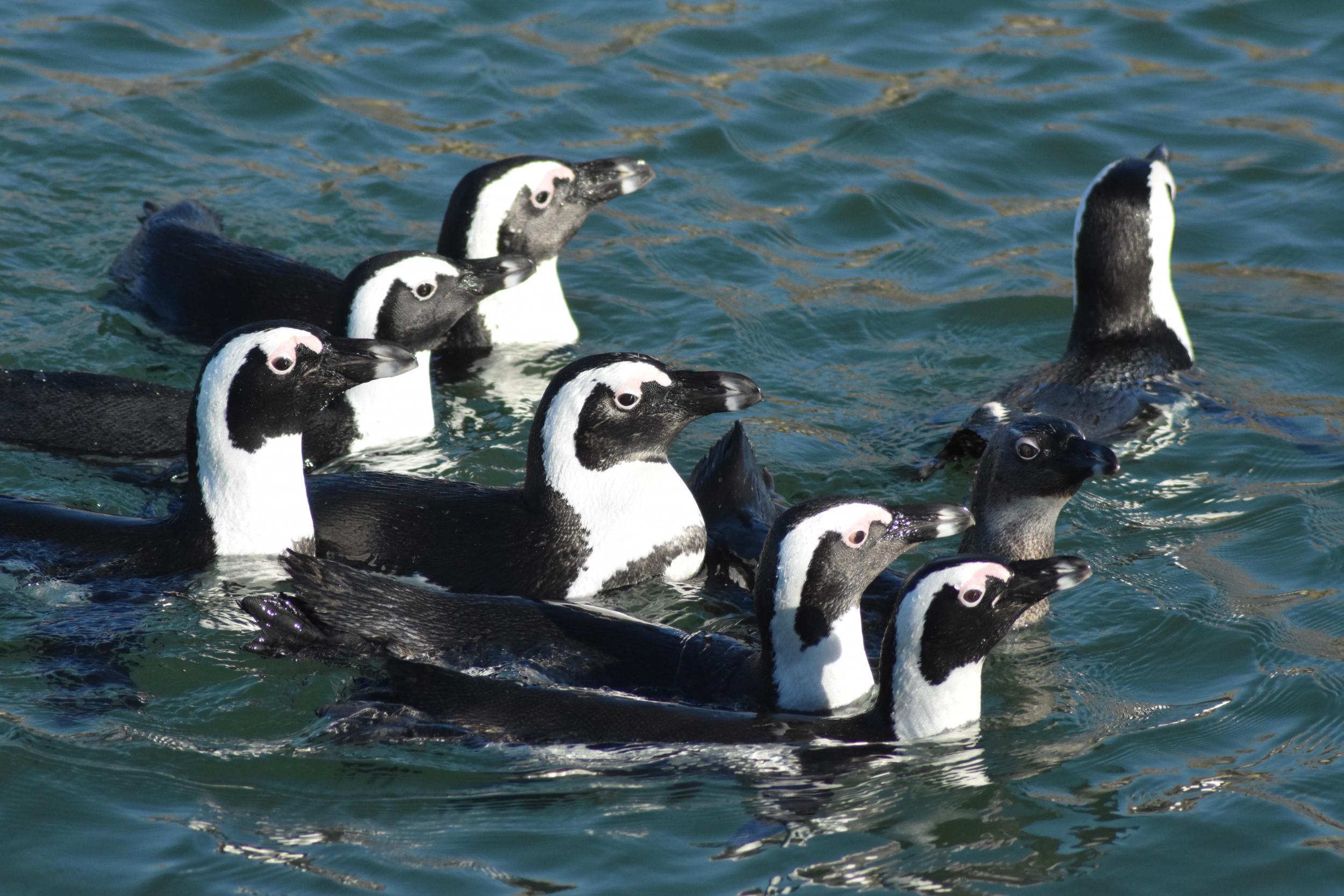
The Kalahari is an entirely different desert proposition to the Namib. For starters, it’s scrubby, with lightly rolling rust-red dunes that are studded with vegetation. It’s also super-disorientating: walk a few dunes over and you’ve completely lost your bearings. The Kalahari also offers a chance to catch the big game that we’ve missed from not heading towards the safari lands of Etosha. There are giraffe, blue and black wildebeest (a confusion of them even chase directly across our path one morning) and the perennial antelopes, which happily come to feed at the watering hole of the cosy Kalahari Red Dunes lodge while we’re having a braai – a traditional southern African barbecue – on the terrace.
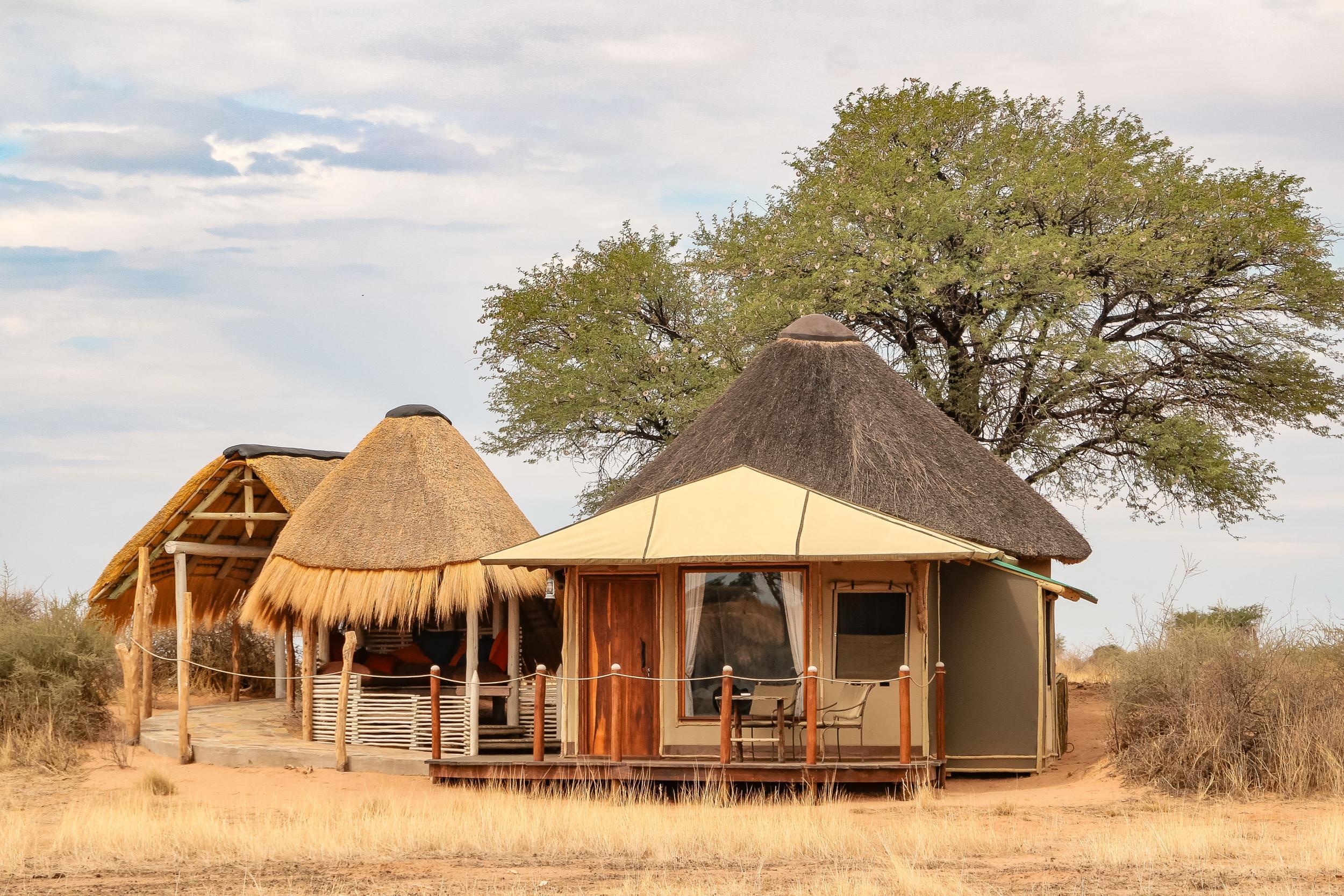
After almost two weeks, we’ve got two deserts, one canyon and some Imax-wide open spaces under our belts. We wind our way back to Windhoek, where our last destination is Omaanda, part of luxed-up European group Zannier Hotels, which opened in 2018 between the capital and the airport. This resort, which sells itself as safari-lite, lies in a bush-speckled private game reserve stuffed with oryx, eland, white rhinos and a pride of lions. The landscape has morphed into a scrubby savannah with the backdrop of an infinity pool and a poolside gin bar with locally made spirits (when in, er, Namibia...).
Sipping on a Desolate and tonic around the firepit, the only light for miles around, I remember what our guide, Chamberlene, at Kalahari Red Dunes Lodge told me: “You get Namibian fever and you have to come back.”
Travel essentials
Visiting there
A 10-day self-drive safari to Namibia with Expert Africa starts from £5,010pp, including car hire, accommodation, activities and some meals. International flights (involving a stopover from the UK) from £830. expertafrica.com, 020 3405 666
Join our commenting forum
Join thought-provoking conversations, follow other Independent readers and see their replies
Comments